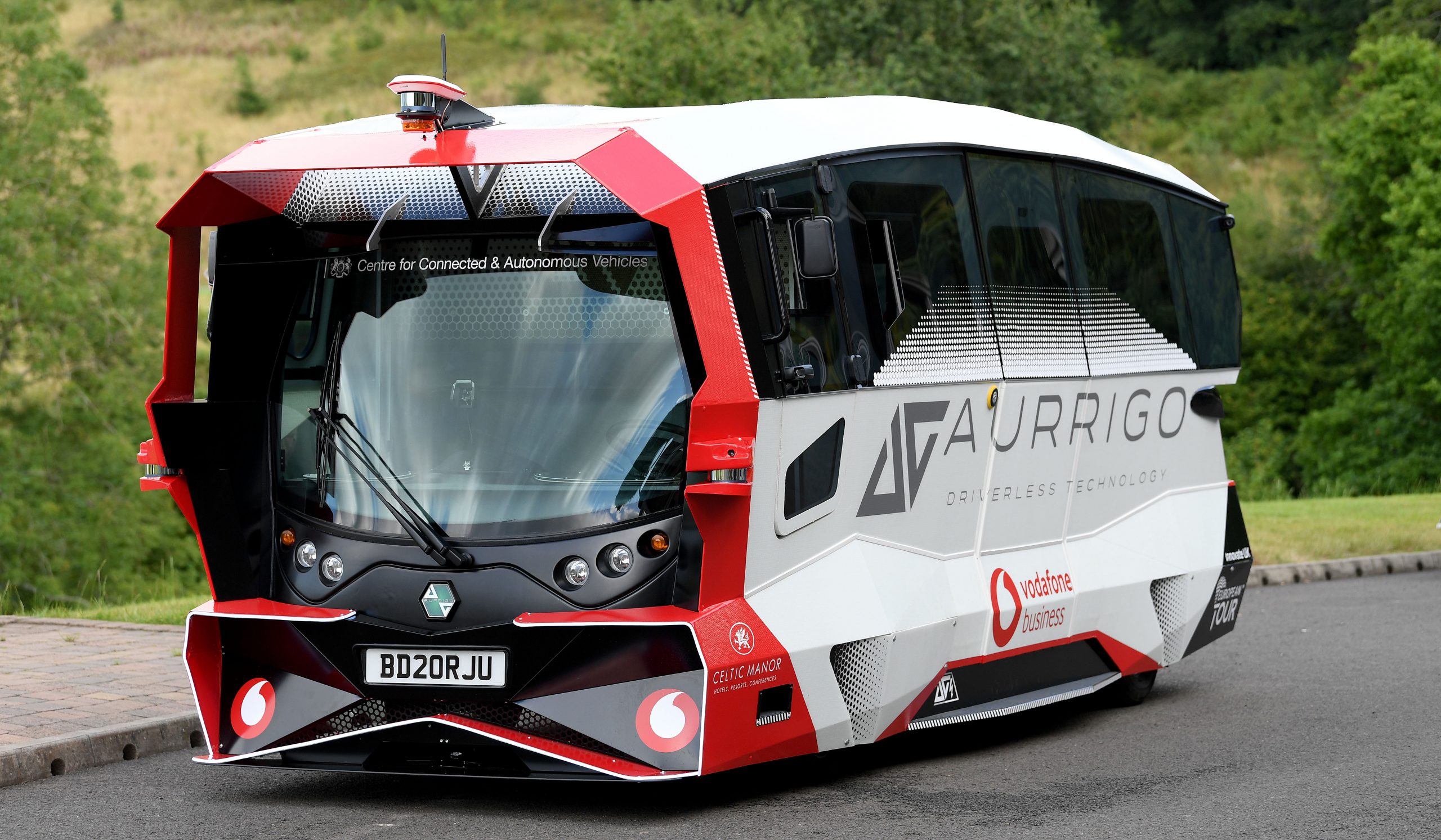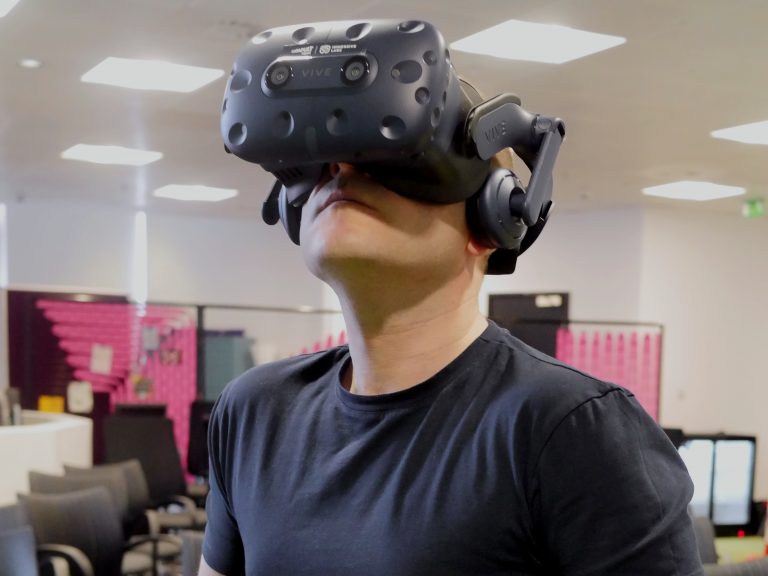
UK business customers and software developers can now use the ultra-low latency capabilities this partnership provides to do things that wouldn't otherwise be possible.
- Wavelength on the Vodafone 4G and 5G networks delivers ultra-low latency capabilities to UK business customers and software developers serving the UK market.
- Customer trials continue in Germany, with general availability scheduled for later in 2021.
- Unique combination of Multi-access Edge Compute (MEC) and Vodafone’s 5G network set to enable creation of novel services and use cases that would not be possible otherwise.
Vodafone has partnered with Amazon Web Services (AWS) to launch Multi-access Edge Compute (MEC) services delivered with AWS Wavelength for Vodafone business customers in the UK.
The launch follows Vodafone trials with companies in a range of areas, including sports technology, autonomous transport, biometric security, remote virtual reality, and factory automation. Vodafone is the only telecoms operator able to offer business customers the combination of 5G and MEC services in the UK.
The process of deploying MEC infrastructure can also be known as moving services ‘closer to the edge of the network’. AWS Wavelength brings AWS compute and storage services to the edge of Vodafone’s network, enabling applications that require increased speeds, massive bandwidth, and ultra-low latency, such as industrial automation, video analytics and machine learning inference (artificial intelligence) at the edge, and interactive live video streaming.
Hosting applications closer to the end user means that data does not have to cross the internet to be processed in locations around the world. This approach means that lag, known as latency, can be almost eradicated as data is both captured and processed closer to the end-user device, offering much faster response times and a much-improved experience.

There are additional advantages beyond the speed and latency capabilities of MEC, including:
- Security: distributed deployments could minimize the impact of single cybersecurity incidents.
- Cost: processing data closer to where it is generated means enables better use of bandwidth.
- Scale: additional resources can be deployed on-demand as and where needed to increase capacity.
In partnership with AWS, Vodafone can initially offer low-latency MEC services to customers in London and the surrounding area, as well as towns and cities including Oxford, Cambridge, Bristol and Cardiff. In the MEC coverage zones, in optimum conditions, latency could be as low as 10 milliseconds Round Trip Time (RTT) between the base station and MEC infrastructure. In 2022, Vodafone will deploy AWS Wavelength to serve customers in Scotland and the northern regions of England, with additional locations being added.
Anne Sheehan, Business Director, Vodafone UK, said: “We are taking our business beyond the traditional boundaries of telecoms connectivity services so that we can bring customers amazing new services. Edge Compute and 5G is a combination no other service provider can deliver in Europe, which means we can offer something unique to our customers. We’ve already seen new services being developed by our trialists – the potential for completely new ideas enabled by this combination is massive.”
George Elissaios, General Manager of AWS Wavelength and Director of Product Management, AWS, said: “By combining AWS Wavelength and Vodafone 5G, businesses and applications developers can now leverage the full breadth of AWS cloud services right at the edge of 5G networks. This enables Wavelength customers to explore new business opportunities, build applications and services that were not possible before, and transform user experiences in the UK.”
What is critically important about MEC is the ability to build and commercialise services that would not have been possible before. New services and applications are likely to be defined by a blend of highly responsive MEC infrastructure and the high-bandwidth, high-capacity features of 5G connectivity, for example:
- Healthcare: the introduction of MEC capabilities in the healthcare industry is a step towards more proactive and autonomous care by analysing data at the point of collection in an environment where seconds count.
- Smart manufacturing/Industry 4.0: low latency capabilities help to enable immediate responses and real-time insights. The ability for equipment to make decisions based on real-time information without human intervention or delay could be a significant advantage for an organisation.
- Transportation/logistics: the optimisation of traffic routes, for more effective city traffic management or logistics companies, could significantly impact quality of life in city centres and the environment. A more intuitive and digitised transport system also sets the scene for the management of autonomous vehicles in the future.

Since the partnership with AWS was announced in November 2020, Vodafone and AWS have been working with several customers through its Edge Innovation Programme to demonstrate MEC capabilities. More than 180 companies signed up to the programme, including:
- Sportable: sports technology company Sportable provides insight using proprietary technology worn by players and embedded in balls. The distributed MEC pilot proved to be more affordable than LAN and lower latency and faster than the internet to transfer packets of data, providing real-time insight for fans, coaches and broadcasters. Latency was lowered to 36.55 milliseconds on average compared to 221.87 milliseconds for the internet.
- Aurrigo: Aurrigo has piloted an autonomous shuttle bus which runs between the park and ride and the campus at Cambridge University, with MEC and 5G capabilities greatly improving safety and performance. This the door for more smart city use cases involving autonomous vehicles, as well as the “mobility as a service” model.
- Keyless: Keyless is a biometric “passwordless” security solution that makes this authentication process faster, more secure and more reliable. Distributed MEC, using Vodafone’s 5G network, handles this compute-heavy authentication process near instantly, improving the experience for consumers without compromising on security or privacy and supporting retail customers to reduce abandoned payments.
- Xpllore: an interactive remote-virtual reality experience where the low-latency benefits of MEC created a smoother experience for students and teachers.
- Interdigital: using Vodafone’s 5G network and AWS Wavelength, Interdigital experienced an average upstream bandwidth above 50 Mbps and an average end-to-end latency less than 15 milliseconds. Focusing on two Industry 4.0 use cases, the detection and disposal of defects on a production line and the remote navigation of a vehicle on the factory floor, Interdigital were able to dramatically improve performance thanks to high bandwidth and low latency improvements.
– ends –
Notes to editors
Latency performance: Round Trip Time (RTT) between the base station and the MEC could be as low as 10 milliseconds in the optimum conditions, including right coverage zones with enough signal strength. Round Trip Time (RTT) between the end-user device and the MEC could range between 12-30 milliseconds depending on several factors, including the distance between the end-user device and the base station, radio interface, network congestion, and the type and location of end-user devices and whether the device is using 4G or 5G connectivity.
Optimal coverage zones: More information on the MEC coverage zones can be found on the Vodafone Business website.
![stock image of a refuse collector and a wheelie bin in front of a bin lorry [Adobe Stock] stock image of a refuse collector and a wheelie bin in front of a bin lorry](https://www.vodafone.co.uk/newscentre/app/uploads/2024/07/Garbage-Removal-Man-Adobe-Stock.jpg)
![DJI_0058[OPTIMISED]](https://www.vodafone.co.uk/newscentre/app/uploads/2024/07/DJI_0058OPTIMISED.jpg)
![Front view woman and man wearing sunglasses [Adobe Stock] cropped edited stock image of a woman and man, both wearing sunglasses, taking a selfie using a smartphone while posing by the waterside](https://www.vodafone.co.uk/newscentre/app/uploads/2024/07/Front-view-woman-and-man-wearing-sunglasses-Adobe-Stock-cropped-edited.jpg)

